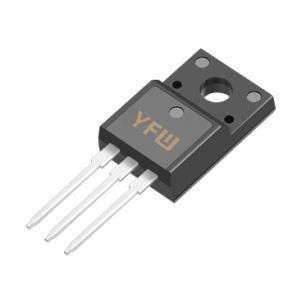At the atomic level, semiconductors possess a valence band (filled with electrons) and a conduction band (empty at absolute zero) separated by a band gap . In intrinsic semiconductors, thermal energy at room temperature excites a small number of electrons across this gap, creating free electrons in the conduction band and holes (electron vacancies) in the valence band. Both carriers contribute to conductivity, though their mobility and concentration vary .
Doping, a critical process in semiconductor engineering, introduces impurity atoms to modify conductivity. For instance, adding Group V elements (e.g., phosphorus) to silicon creates n-type semiconductors, where free electrons dominate. Conversely, Group III elements (e.g., boron) produce p-type semiconductors, characterized by hole conduction . This manipulation allows engineers to tailor materials for specific applications, such as diodes, transistors, and solar cells.
Doping Concentration: Higher dopant levels increase carrier density, enhancing conductivity. For example, heavily doped "degenerate" semiconductors mimic metallic behavior, ideal for contacts in integrated circuits .
Temperature: Unlike metals, semiconductor conductivity rises with temperature due to increased thermal excitation of electrons. However, excessive heat can cause instability, necessitating thermal management in devices .
External Fields: Electric or magnetic fields can alter carrier mobility. In optoelectronics, light exposure generates electron-hole pairs, enabling applications like photodetectors and solar panels .
Semiconductor conductivity is pivotal across industries:
Consumer Electronics: Transistors and diodes, built from p-n junctions, control current flow in devices like smartphones and laptops. YFW’s fast recovery diodes and MOSFETs, designed for high-frequency switching, optimize power efficiency in adapters and automotive electronics .
Renewable Energy: Solar panels rely on semiconductors to convert sunlight into electricity. YFW’s Schottky diodes with ultra-low forward voltage drop (VF) enhance energy harvesting in solar inverters, while SiC-based devices improve the efficiency of wind turbine converters .
Automotive Systems: In electric vehicles, power semiconductors manage battery charging and motor control. YFW’s IGBTs and rectifier bridges ensure reliable performance in harsh environments, supporting the transition to sustainable transportation .
Advancements in third-generation semiconductors like silicon carbide (SiC) and gallium nitride (GaN) are redefining conductivity limits. These materials offer wider band gaps, enabling higher voltage and temperature operation with reduced energy loss. For example, SiC-based inverters in EVs can extend driving range by 10% compared to traditional silicon devices . Meanwhile, research into organic semiconductors and air-doping techniques promises eco-friendly, low-cost alternatives for flexible electronics and energy storage .
As a leader in semiconductor manufacturing, YFW prioritizes precision engineering and technical innovation. Our products, such as transient voltage suppression diodes and thyristors, leverage optimized doping profiles to deliver superior conductivity and reliability. By combining cutting-edge materials with rigorous quality control, YFW empowers industries to push the boundaries of efficiency and performance .
In conclusion, semiconductor conductivity is not merely a scientific phenomenon—it is the catalyst for technological progress. By understanding and harnessing this property, engineers and manufacturers like YFW continue to shape a smarter, more sustainable future.
